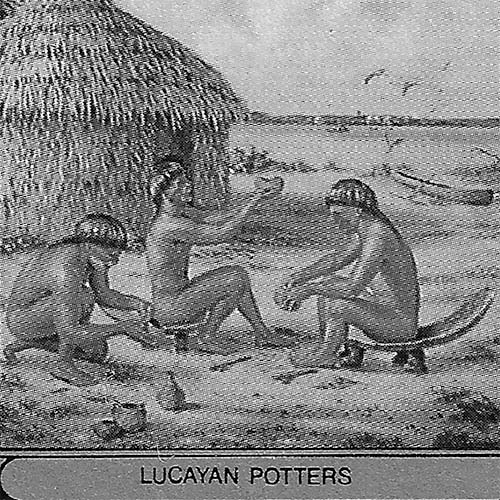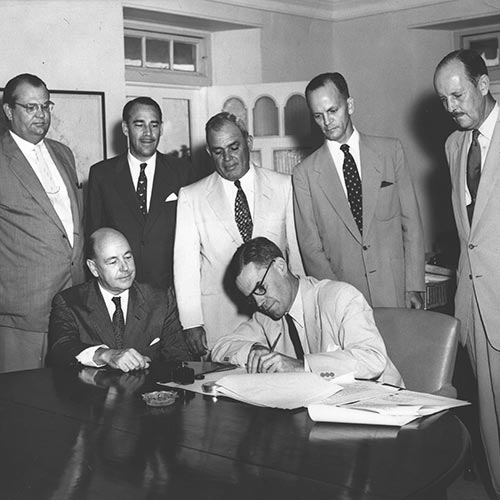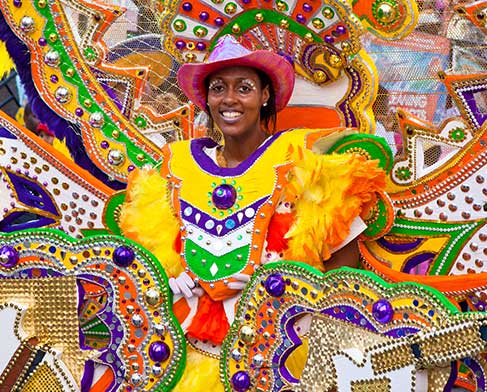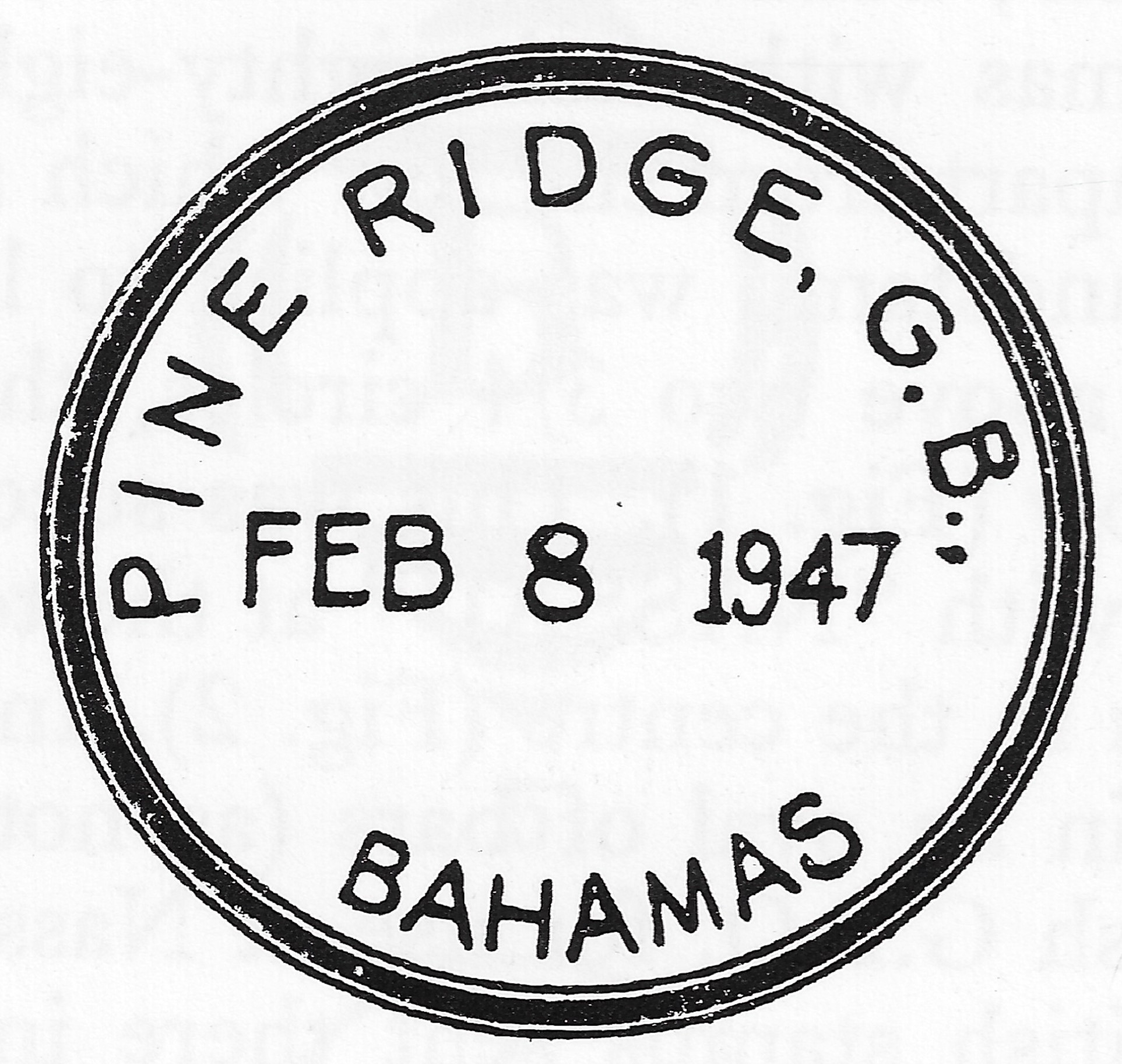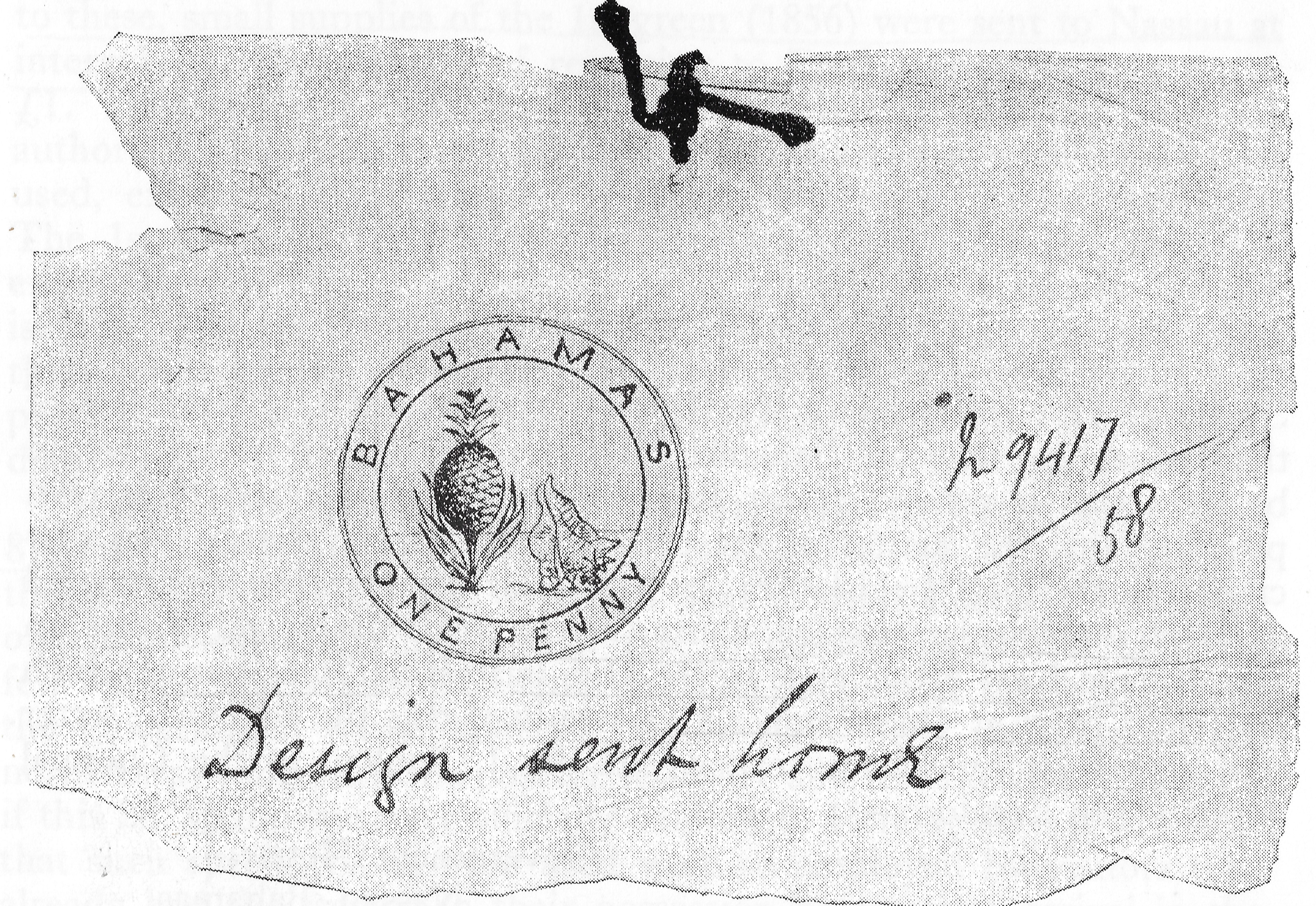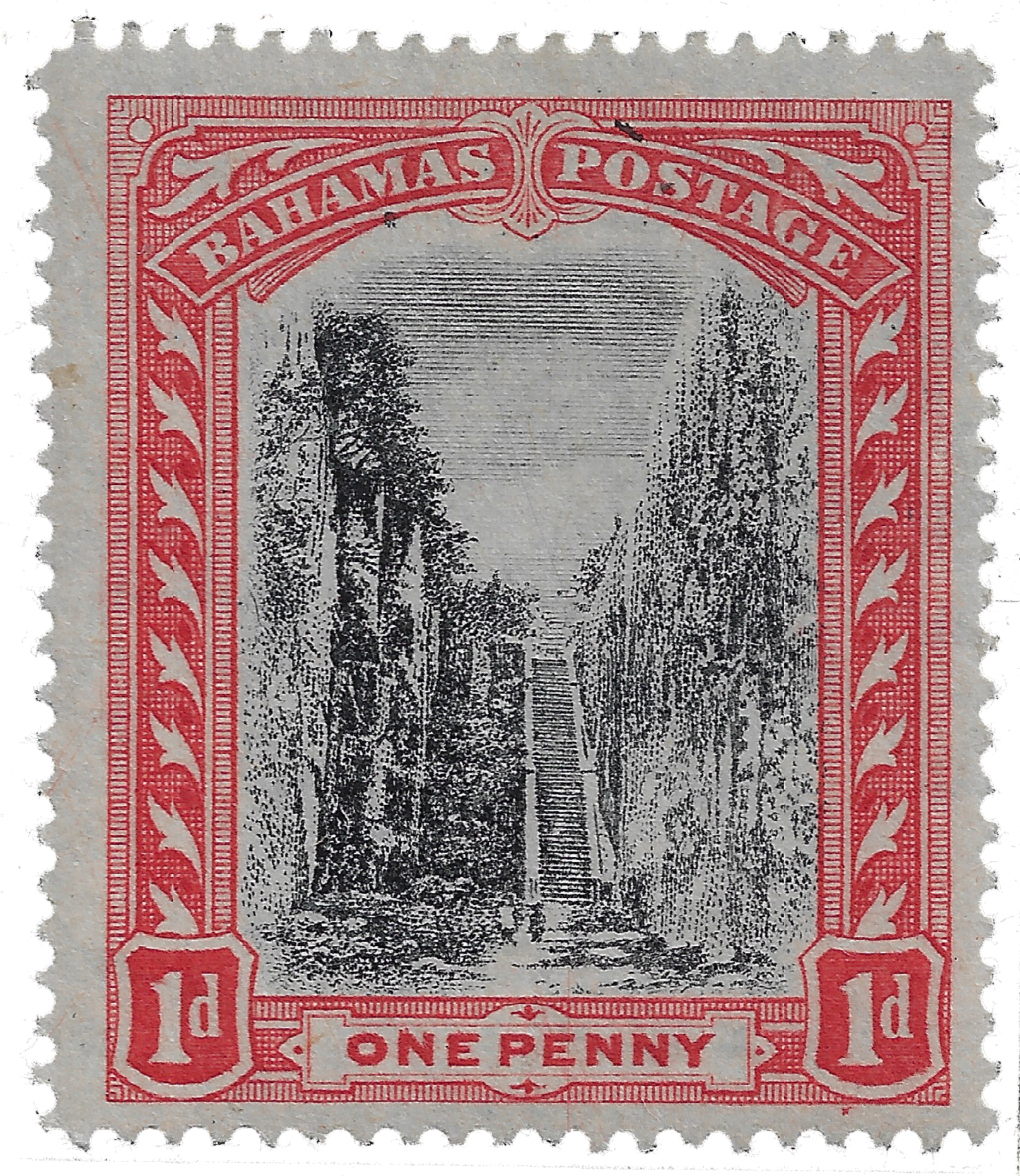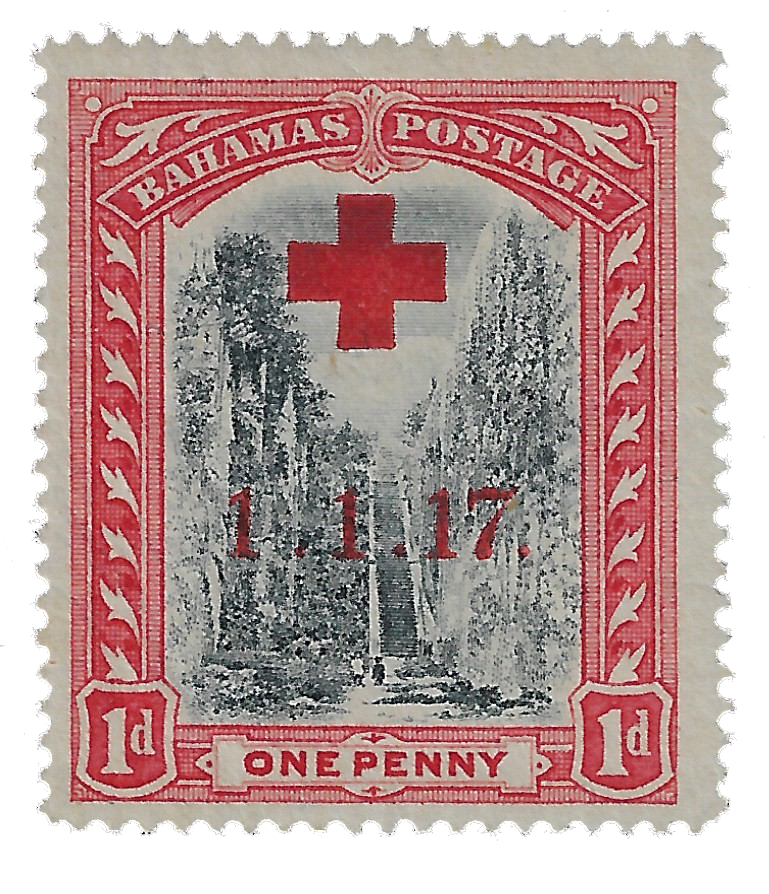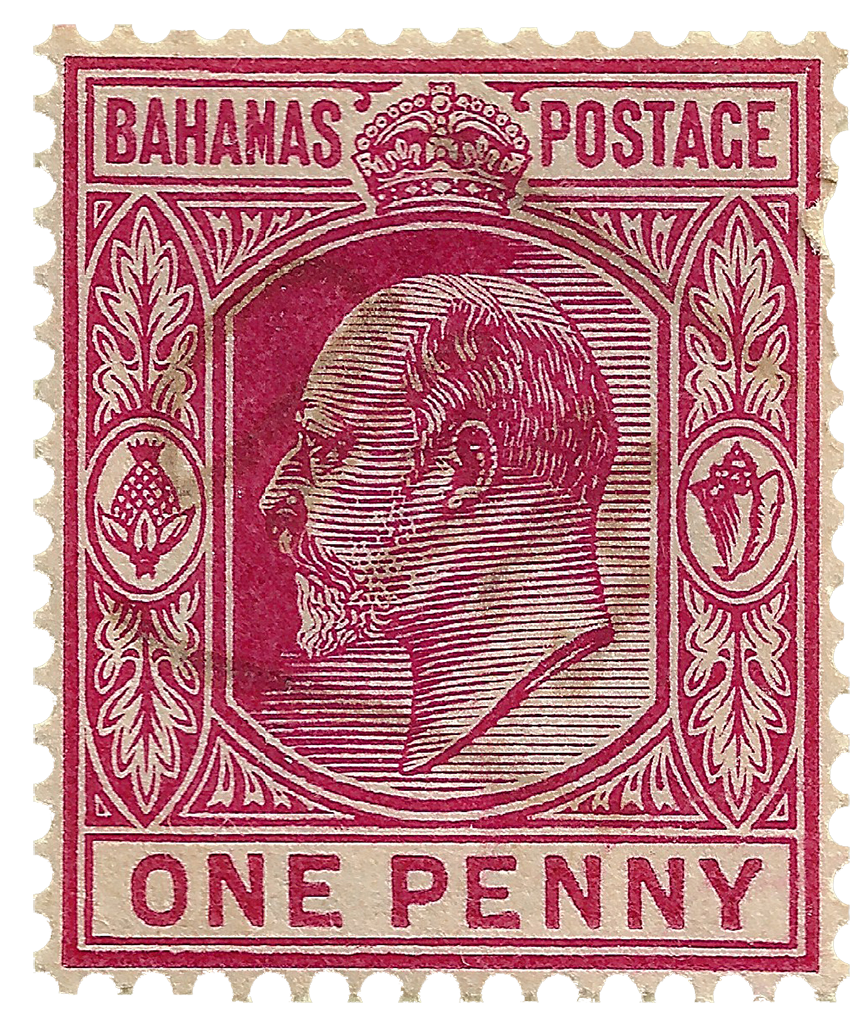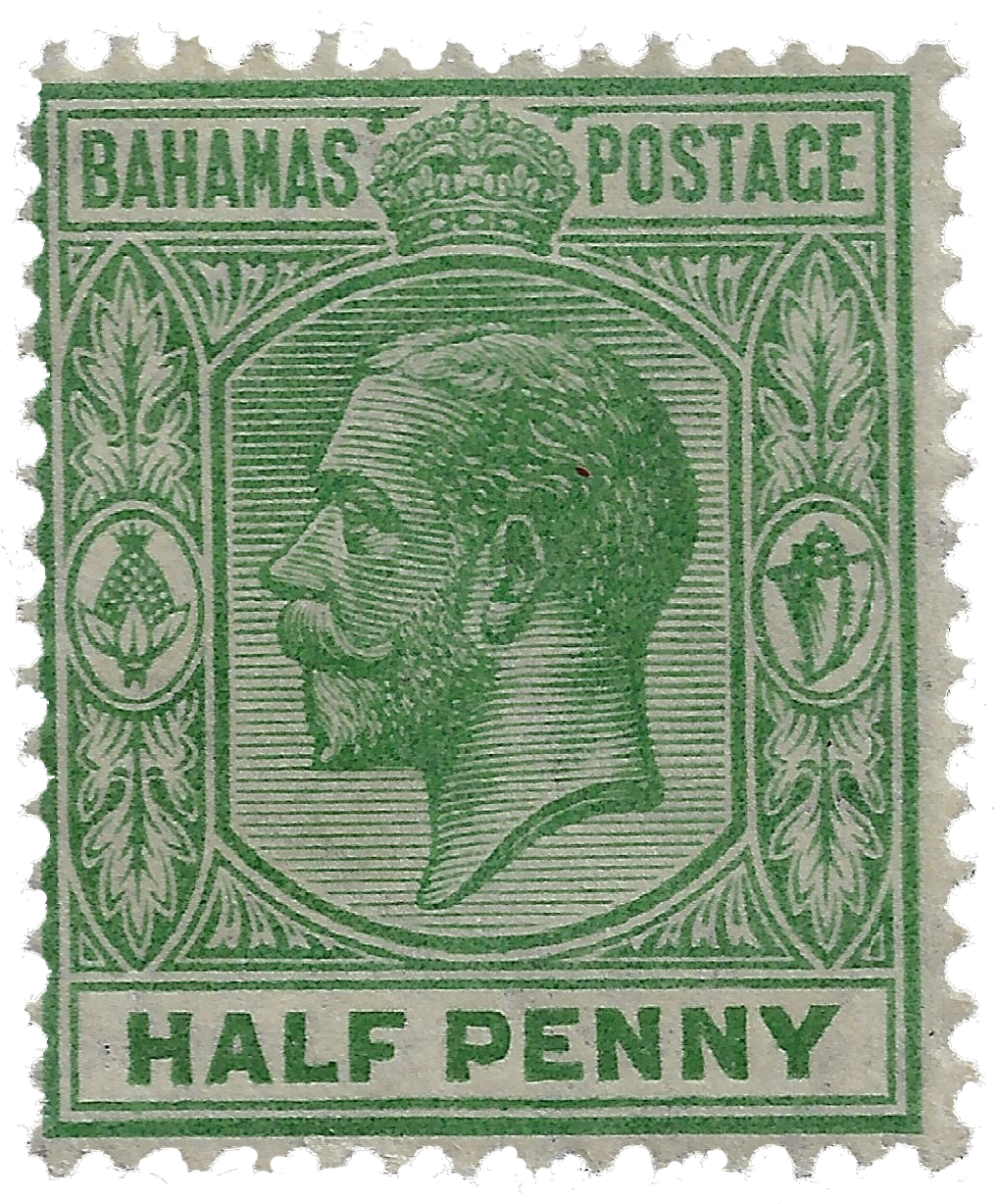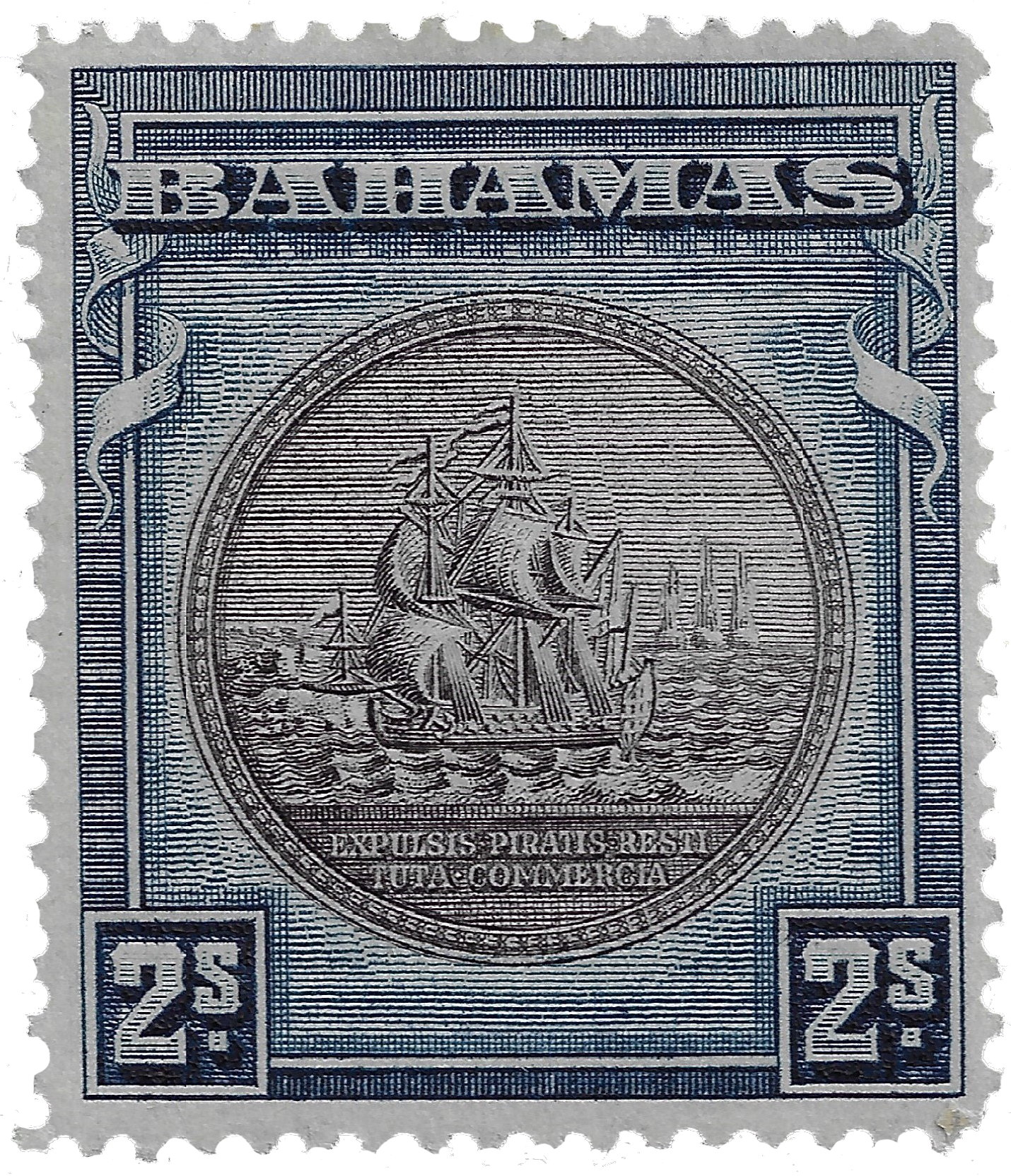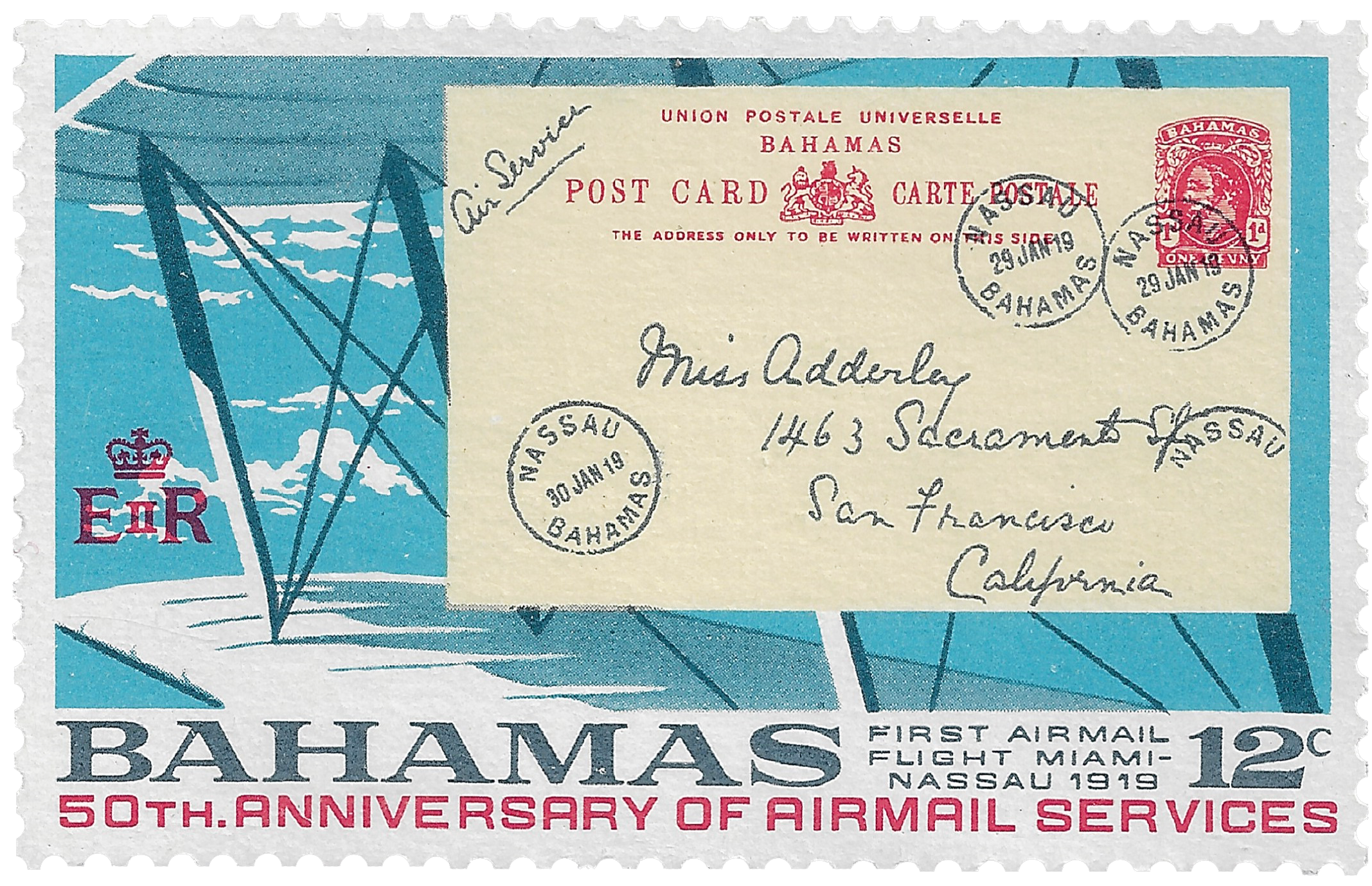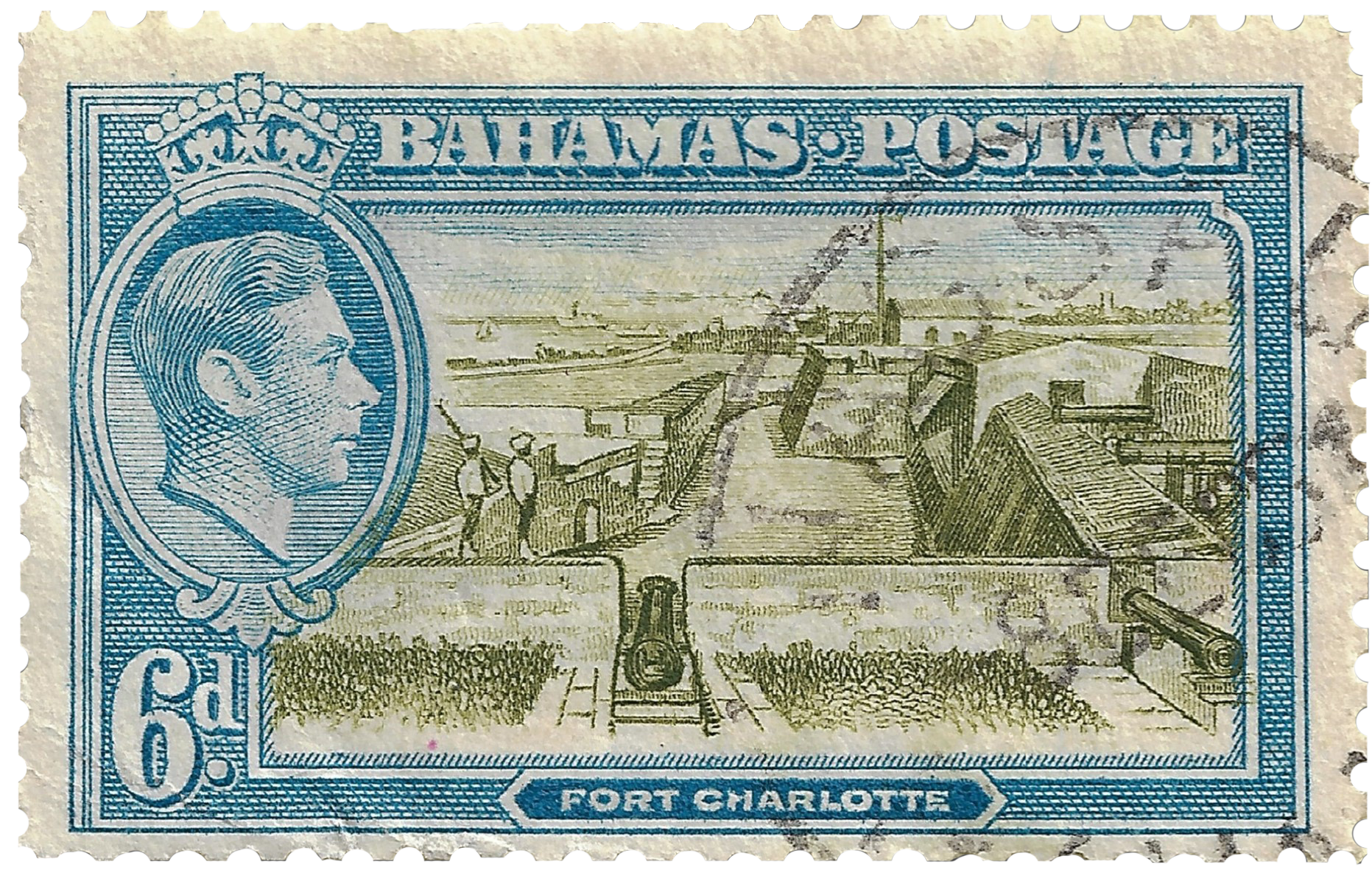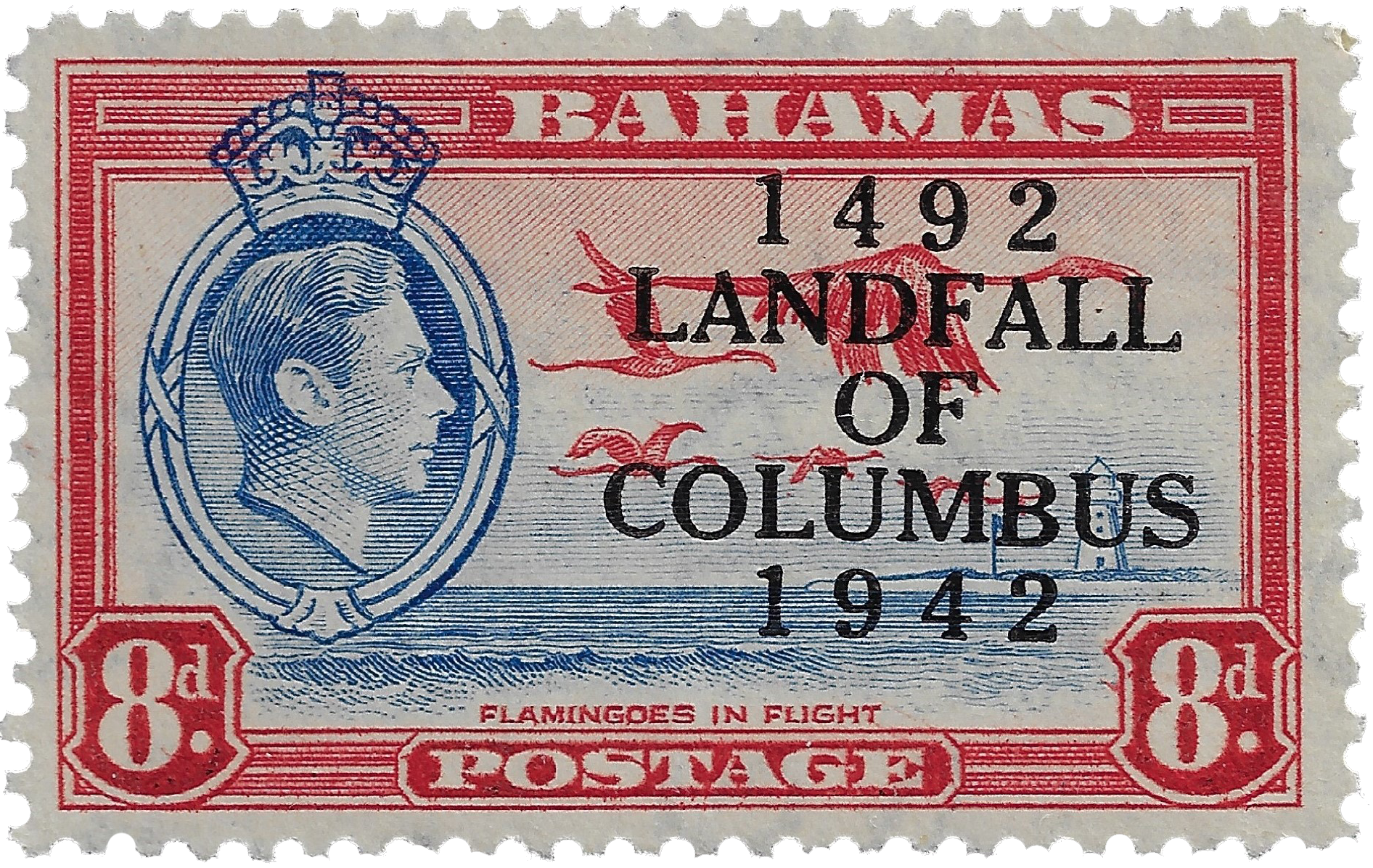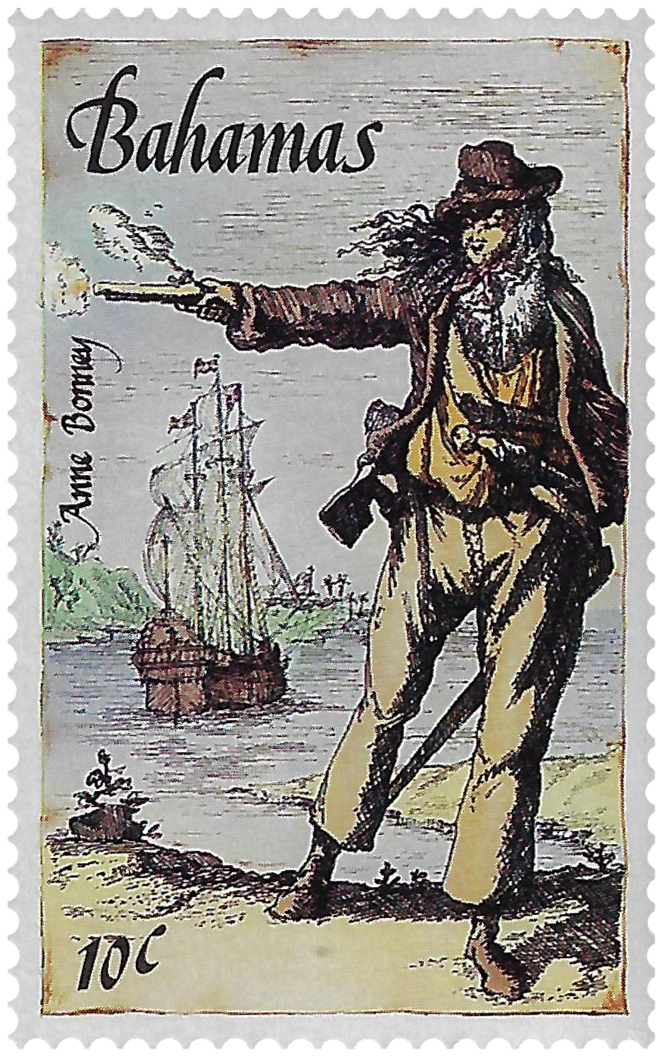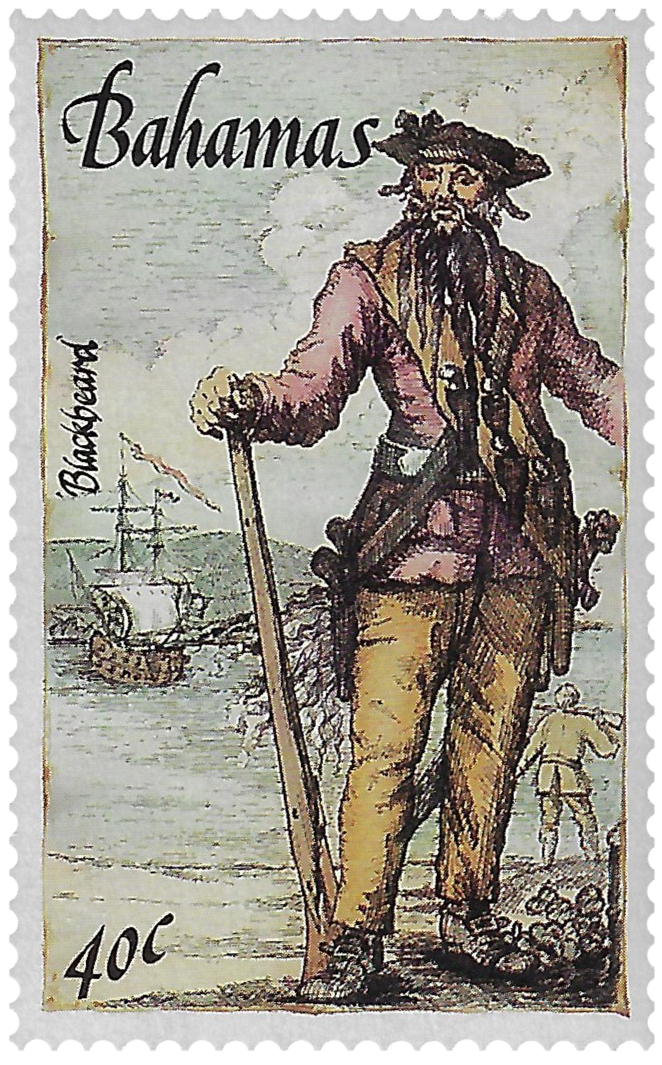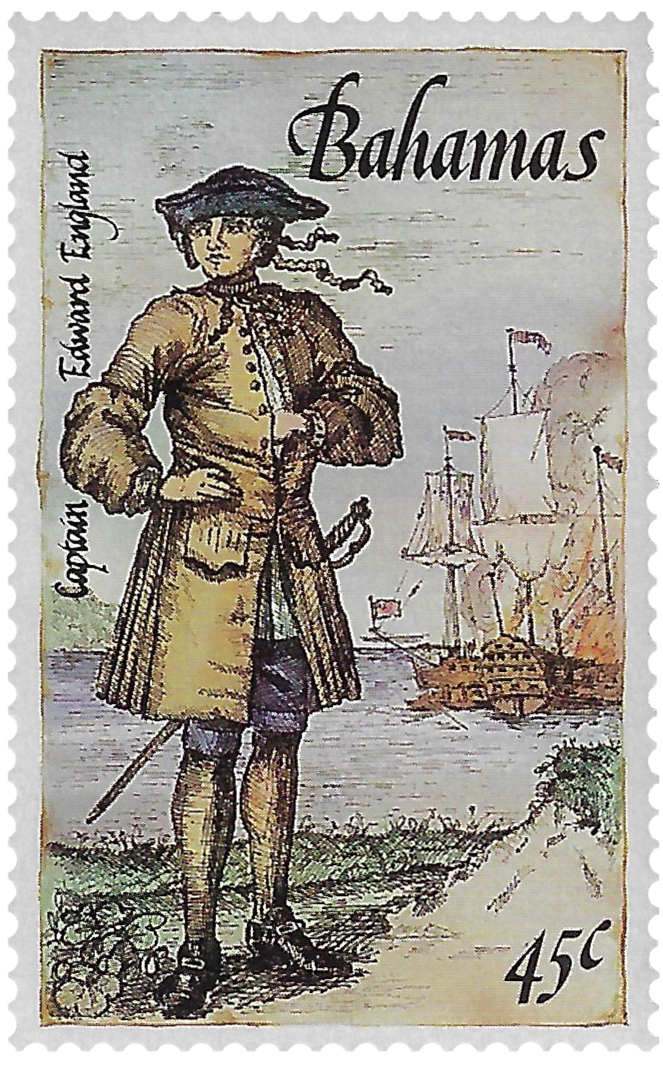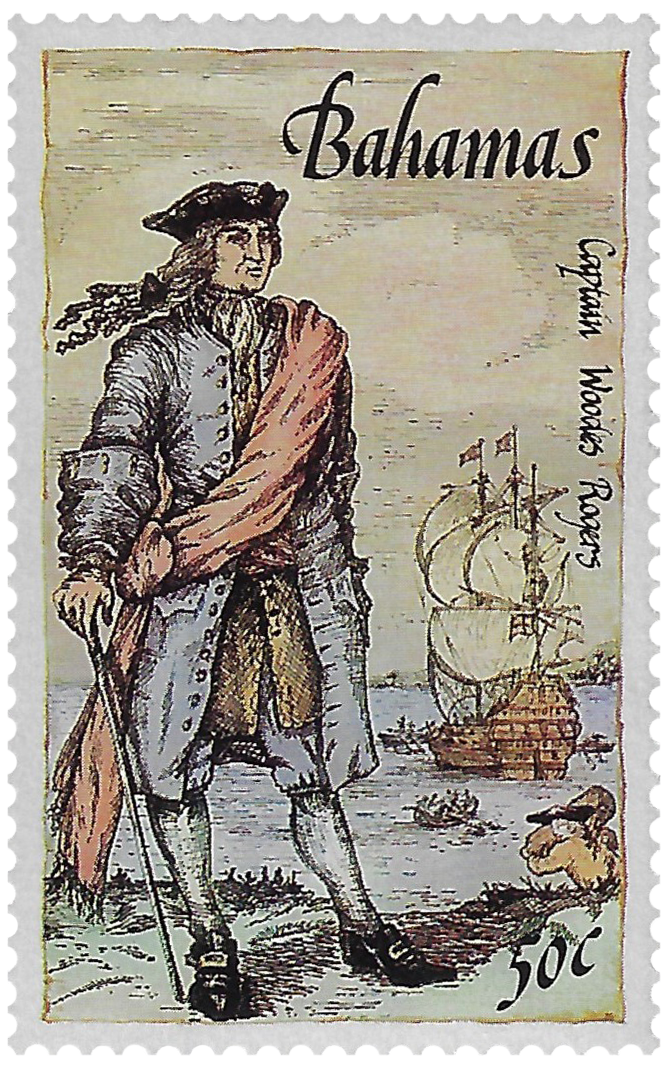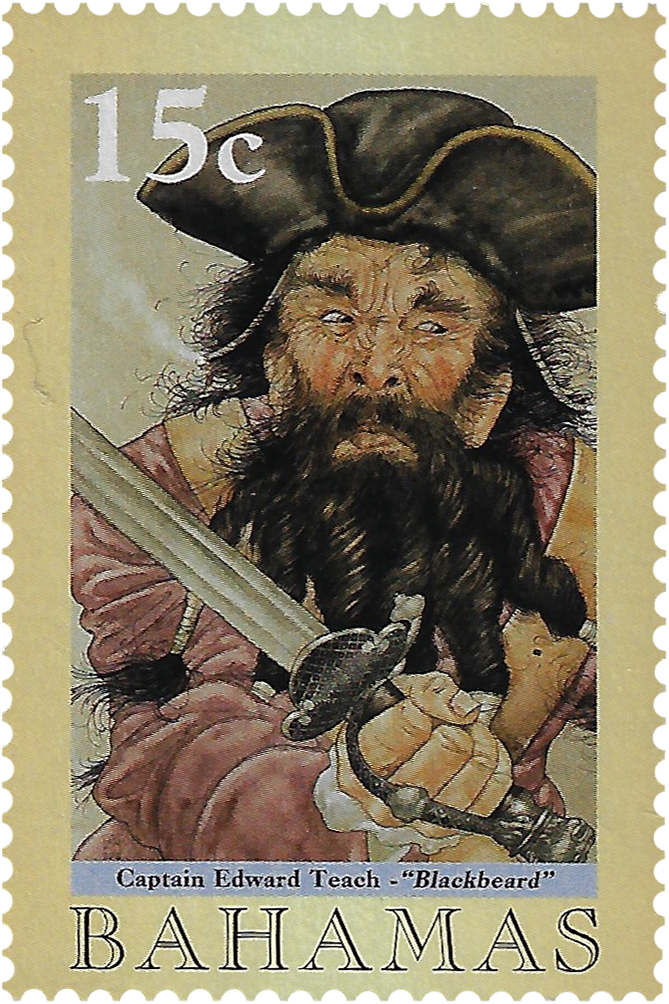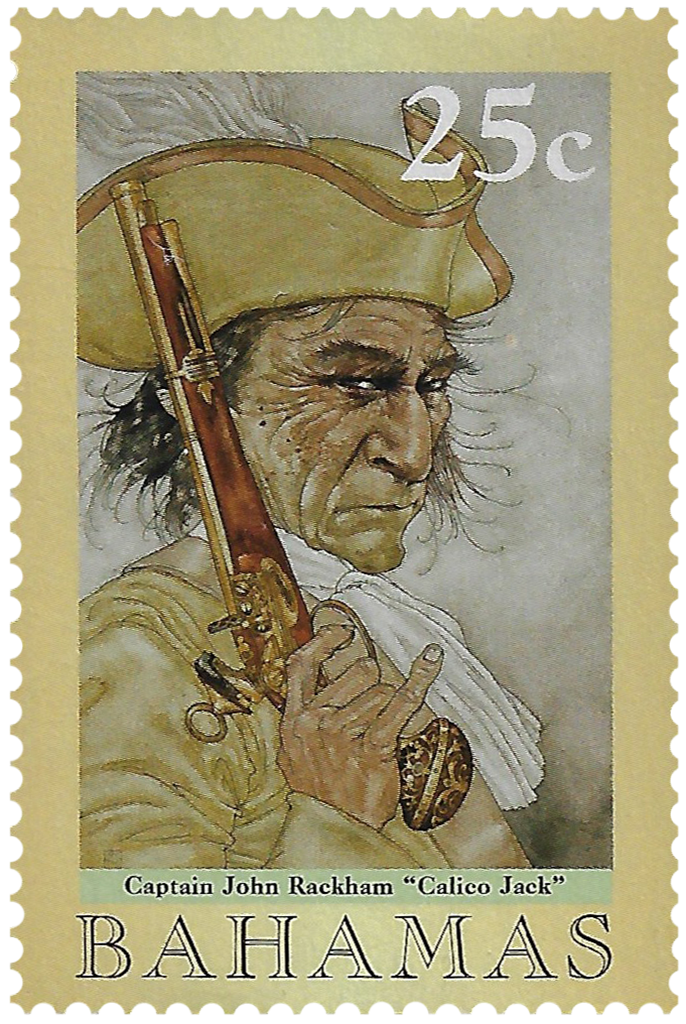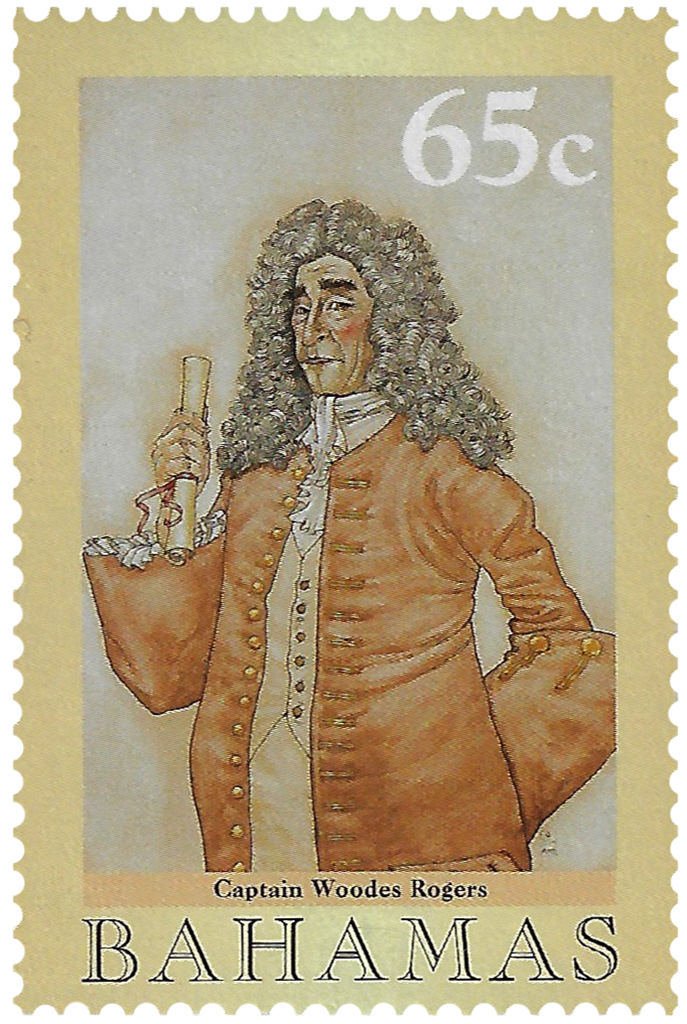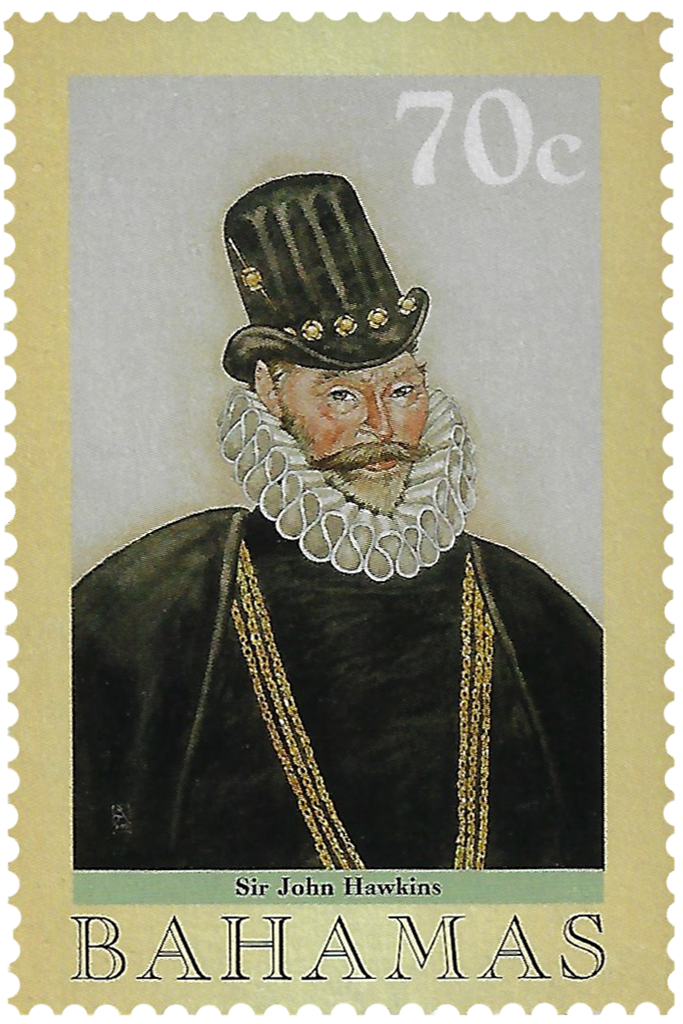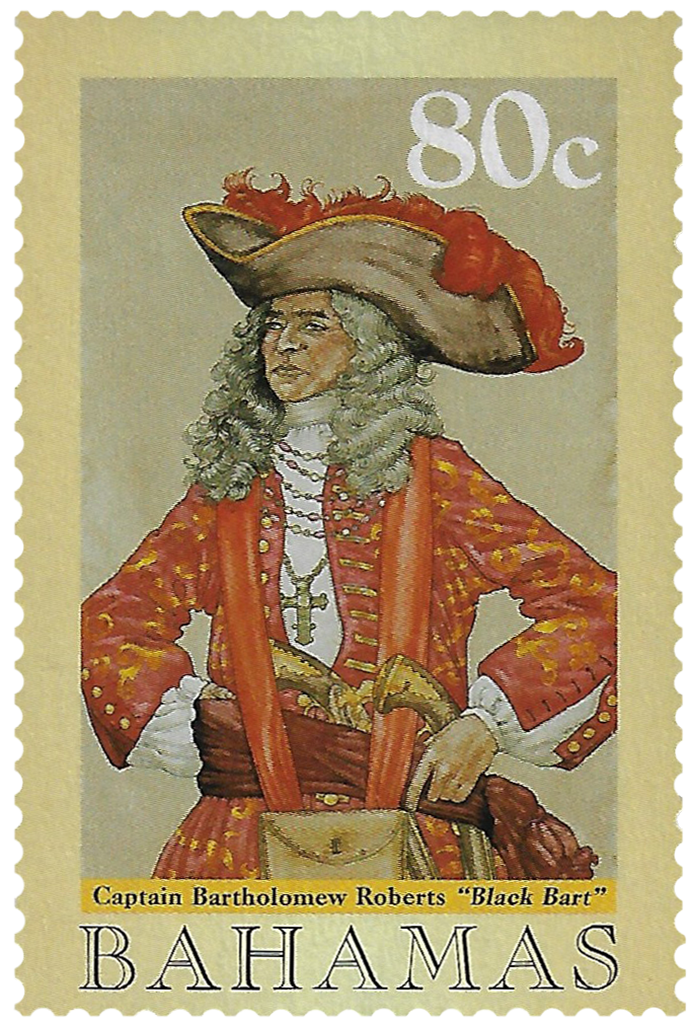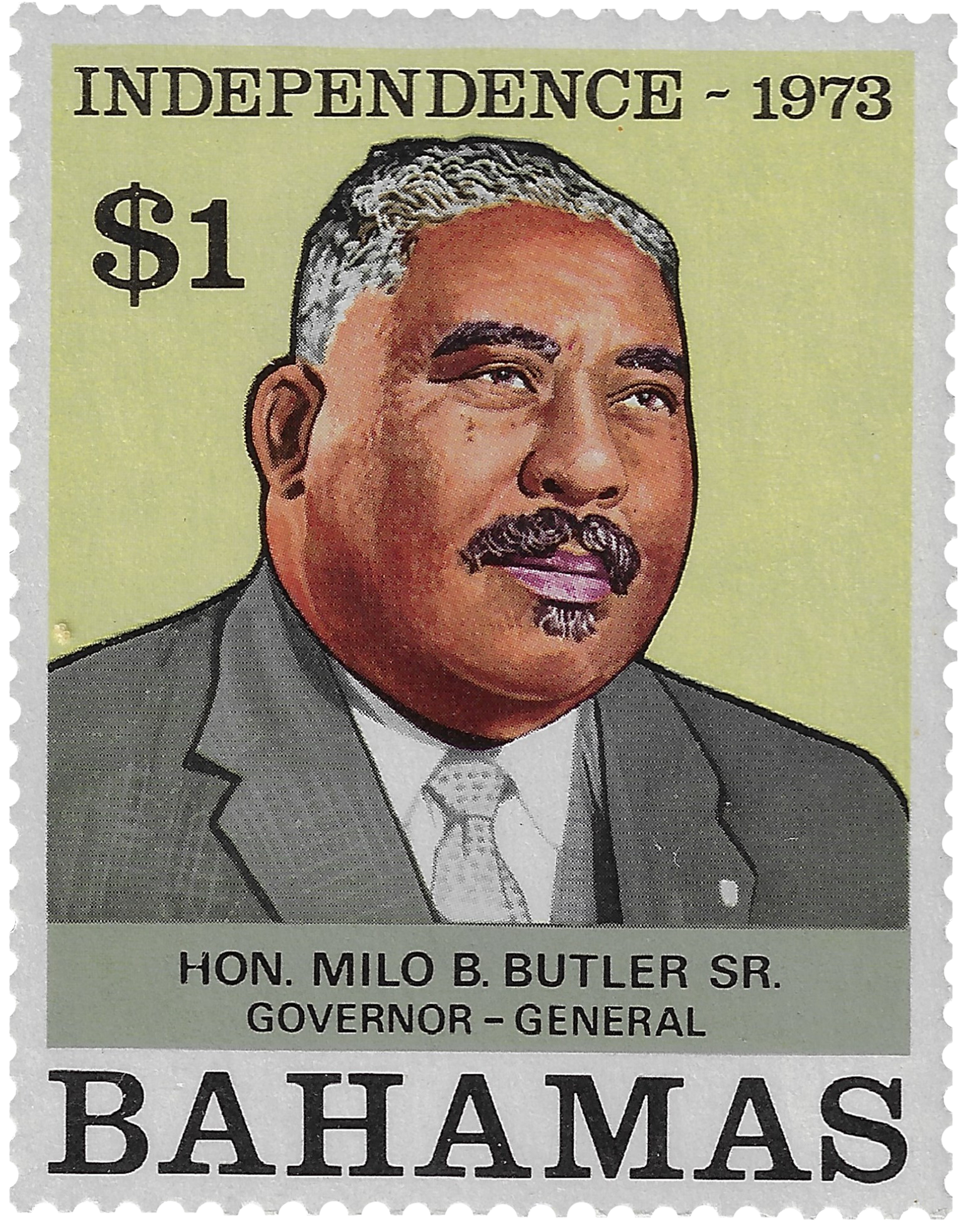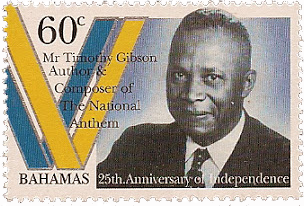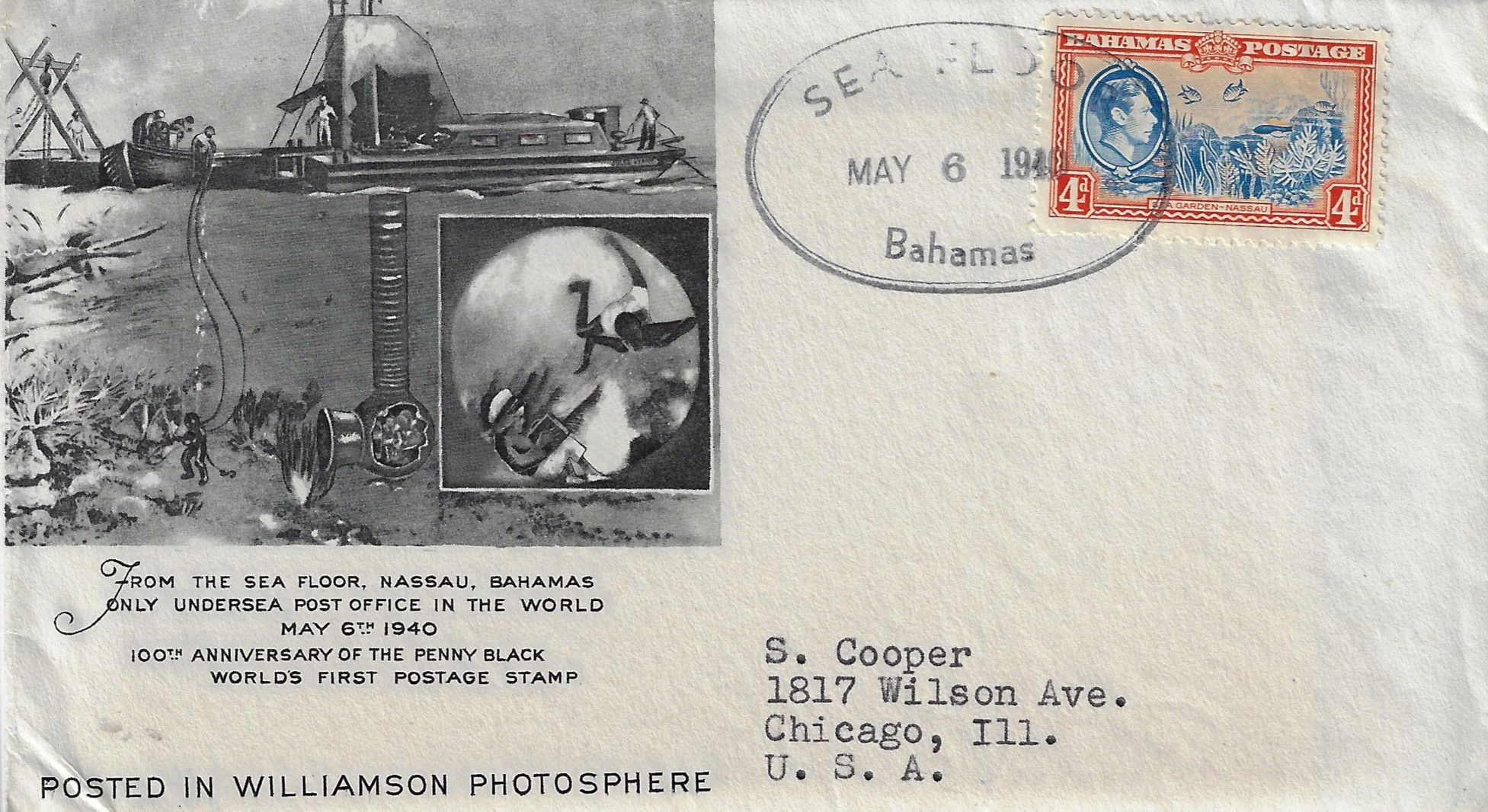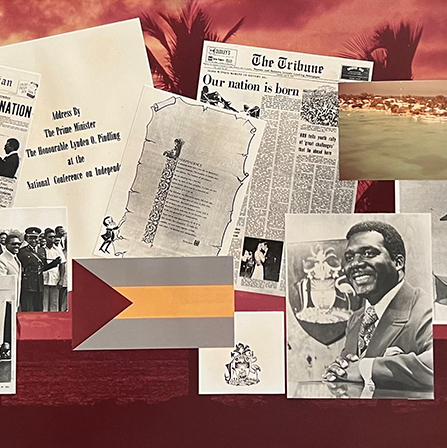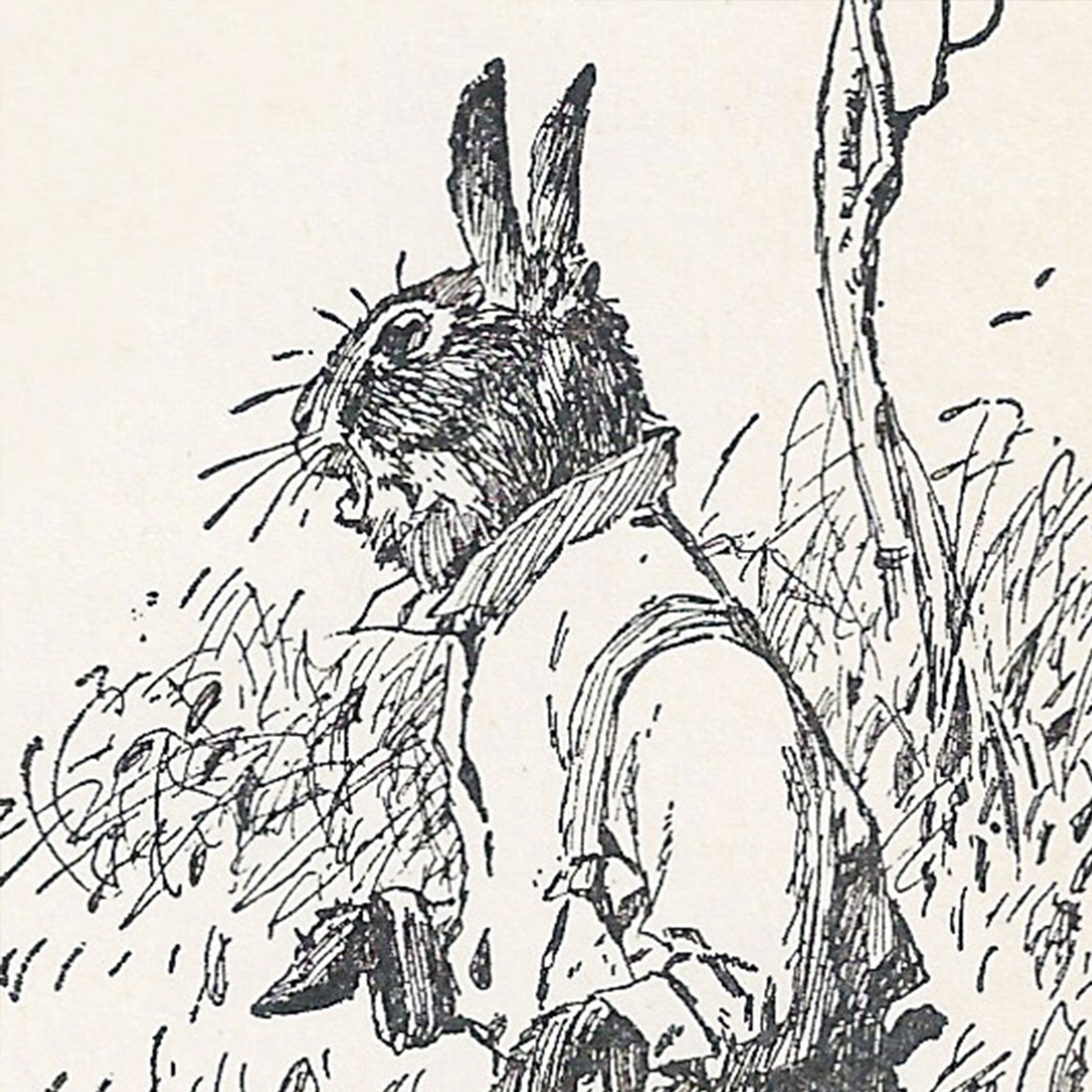Stamps
Philatelic History of the Bahamas
Postage stamps and their study provide a fascinating and colorful window into the history of the Bahamas. The rule of the nation, its politics, wars, geography, and natural disasters can be followed through the artistic representations on these small pieces of gummed paper.
Stamps celebrate accomplishments and commemorate events. They remind us of causes such as conservation and celebrate rich diversity of the flora and fauna. Stamps continue to fascinate and challenge our concept of current and past eras. Next time you put a stamp on, take a closer look. Every stamp tells a story!
The Beginning of Mail in the New World
The first message between the New and Old World originated in the Bahamas in the historic letter written at Guanahani by Christopher Columbus to Queen Isabella of Castile. It told her that, “This country exceeds all others as far as the day exceeds night in splendor; the natives love their neighbours as themselves and I swear to your Highness there is not a better people in the world.” (Gisburn, 1950)
The history of organized postal service to the Bahamas begins when the British Post Office Packet Service was extended to the West Indies in 1702. After 1718, “an Act for establishing a General Post Office in all Her Majesty’s Dominions” was enacted that, “Letters may be brought from abroad by private ship, but must be delivered at one into the hands of the deputy postmaster at the respective ports of arrival who will pay the master of the ship a penny for every letter which he may deliver up to them.”
This method allowed for the delivery of letters via private ship but it was not until the Act of 1799 that Postmasters-Generals were allowed to send letters through a system of “ship letters.” After 1860, the conveyance of written communication was transferred back to the Post Office with the establishment of the Steam Packet Service Royal Mail Line, controlled by Admiralty administration, between Britain and the West Indies.
Once regular transatlantic crossings were established by Samuel Cunard, the Post Office engaged the Cunard Line (1858) with the Atlantic mail service. Cunard extended its routes through service, via New York to Nassau via the Cunard White Star, Ltd. by 1863. (Gisburn, 1950)
Packet Service to Mailboats
What began in the 1700s as the Post Office Packet Service continues to this day, as a system of 25 inter-island mailboats. Administered by the Ministry of Transport, the boats not only carry the mail, but also passengers, freight, fresh produce and various live and frozen cargo, providing a critical link between the islands. Read more about the History of Mailboats.
Famous Stamps
"Chalon" Stamps
Bahamian postal history began on 6th July 1858 with a letter from the Colonial Governor in Nassau to the Secretary General in London. It was a request for the production of a die for interinsular postage stamps for use on letters between New Providence and the Out Islands for the fixed price of a penny. A sketch for the design of the stamp was included as a pineapple and a conch shell, symbols of hospitality and tourism, contained in the circle.
Due to difficulties in production of stamps in a circular shape and anticipated challenges for perforation, a decision was made to use the portrait of Queen Victoria from the famous painting by Alfred E. Chalon on the existing English draft-sized stamp. The Colonial government did not initially approve the die proof as it lacked the conch shell and the pineapple. Further revisions were made to include these in ovals on either side of the monarch’s portrait with “Bahamas” at the top and “One Penny” below. An arched ribbon with “Interinsular Postage” appeared over the portrait.
The creation of the die and the production of the Chalon One Penny stamp in 1860 marked the independence of the Bahamas Post Office. The Penny Red, as it came to be known, was produced for 25 years.
Victorian Surface-Printed Stamps
With the advent of the American Civil War and closing of the ports of the seceding states in 1861, commercial enterprise flocked to Nassau as a center for blockade running. The increase in commerce led to a greater demand and need for higher denomination postage stamps than those already in production. The new surface-printed design was dispatched to the Bahamas in 1863, and incorporated a profile of Queen Victoria together with the characteristic conch shell and pineapple inserted in ovals. (Gisburn, 1950)
The Queen's Staircase
High above the city of Nassau is Bennet’s Hill, a solid 100-foot towering limestone hill upon which the old defensive work of Fort Fincastle was built. On one side of the hill a flight of 66 steps was carved out of the solid rock to connect the lower level of the surrounding villages with the entrance of the fort above. A definitive record of the circumstances and timelines for the construction of the staircase do not exist, but various stories place its construction between 1672 and 1837. It was built by slave labour.
The die for the “Queen’s Staircase” stamp was produced from a photograph of the actual staircase and was engraved in five different vignettes between 1901 and 1929.
In 1916, the Colonial Postmaster of Nassau requested reciprocal stamps for visiting Canadian tourists, prompting the overprinting of “Special Delivery” on the Staircase stamp for distribution to the Canadian postal service to allow delivery of a letter to the Bahamas.
In the same year, to show support of the Bahamas branch of the British Red Cross, the one penny Staircase stamp was overprinted with the Geneva Cross with the date of 1.1.17. Upon discovery that the use of overprinting on the Cross stamp was not allowed by the Geneva Convention Act of 1911, the decision was made to overprint the one penny Staircase stamp with the words “War Tax” together with the date of “3.6.18” to commemorate the date of the issue and 200th anniversary of the arrival of the first Royal Governor, Woodes Rogers. (Gisburn, 1950)
Edwardian Issues
With the accession of King Edward VII to the British throne, the Bahamas Government requested a series of stamps bearing his image. Edwardian issue stamps bear the profile of the monarch within an ornamental frame incorporating the requisite pineapple and conch shell. First issued in 1902, the series was finally withdrawn from sale in 1914. (Gisburn, 1950)
Georgian Series
King George V ascended the throne in 1910, but it was not until 1912 that the first series of stamps bearing his head appeared. This stamp was also used for War Tax purposes, as allowed by the War Tax Stamp Act of 1918. The initial supply was overprinted in Nassau. With the repeal of the Act in 1920 all stamps with this overprinting were removed from sale.
In 1938, 12 months after the accession of King George VI, a series of stamps bearing the head of the new sovereign within the same frame design were delivered for use.
Brandbury Wilkinson Issues
Celebration of the Tercentenary anniversary of England’s official interest in the Bahamas, first recorded as 1629, and the Bicentenary commemoration of the first representative assembly with the suppression of pirates in 1729 inspired production of the 1929 Brandbury Wilkinson commemorative. The vignette that appears on the stamp was inspired by a representation of the Great Seal of the Bahamas. The image depicts an encounter between a royal and pirate warship with the motto “EXPULSIS PIRATIS – RESTITUTA COMMERCIA.”
The Advent of Airmail and Waterlow Pictorial Stamps
January 1930 marked the start of daily airmail service between Nassau and Miami. Though no postage stamp was specifically created to commemorate this, the issue of the 1935 series Waterlow Pictorial Stamps alluded to “flight.” The first of the series was produced in the dual colors of scarlet and deep ultramarine with the vignette of a group of flamingos in flight.
A second design was taken from the underwater photograph of J. E. Williamson’s view of the “Sea Gardens” and produced in blue and framed in red-orange.
The third vignette depicted Fort Charlotte at the entrance to Nassau Harbour in olive green and frame in light blue.
In each case, a crowned oval of the reigning monarch appears on the left side of the stamp. In 1942, these three stamps were overprinted with “Landfall of Columbus” as commemoratives.
Pirate-Themed Stamps
The Caribbean Sea was turning into a pirate sea and the Bahamas Islands into a pirate empire in the 1700s and 1800s. While searching for gold and other plunder, pirates also accomplished great achievements navigation, discovery and seamanship. Their ranks had incredible and contradictory characters, as well. These included Sir Henry Morgan, a Welsh privateer famous for his attacks against the Spanish and later governor of Jamaica. The notorious Edward Teach, famously known as Blackbeard, also lived and plundered throughout the Bahamas. Anne Bonny and Mary Read were two women famous for their pirating adventures, just as wild and tough as their male counterparts.
During the Golden Age of Piracy (1690 to 1725), the Bahamas had the greatest concentration of pirates in the Caribbean. The islands were next to busy shipping lanes, and the surrounding waters were too shallow for man-of-war ships but ideal for shallow draft crafts favored by pirates.
Sir Lynden Oscar Pindling Stamp
Pindling was the Bahamian politician and prime minister from 1967 to 1992 who guided the Bahamas to independence in 1973. He is considered the country’s founding father. Born in the Bahamas, he received a law degree at King’s College, University of London and helped found the Progressive Liberal Party (PLP), which represented the interests of the black community in the Bahamas. He became the Bahamas’ first black prime minister in 1967 and he guided the Bahamas through tourism and economic growth and won reelection five times. He was knighted in 1983.
Sir Milo Boughton Butler Stamp
Sir Butler was the first Bahamian Governor-General, knighted by Queen Elizabeth II in February 1975 during her visit to Nassau. Born in Nassau in 1906, he was a veteran of more than 35 years in politics. He was well-known, and became truly famous in 1956 for flinging the Speaker’s hourglass through the window of the House of Assembly as a result of the Government’s introduction of a 12-minute rule to curb lengthy speeches. He was proclaimed a National Hero in 1972 by the Honourable House of Assembly. He died in 1979. There is a large bronze sculpture of Sir Milo Butler at Rawson Square. A highway is also named in his honour — and this stamp honours him, as well.
Timothy Gibson Stamp
Timothy Gibson was born in 1903 in Savannah Sound, Eleuthera, Bahama Islands. A composer, songwriter and educator, he is best known for writing the national anthem of the Commonwealth of the Bahamas, "March on, Bahamaland." It was composed by Mr. Gibson as part of a national competition and was adopted in 1973.
The Undersea Post Office
The Bahamian postal system attracted international attention in 1939 with the establishment of the Sea Floor Post Office that operated between an underwater Paradise Island location and the capital of Nassau.
Photographer J.E. Williamson, during his rigging of an underwater photosphere to facilitate capturing images of the underwater world, created a post office within his six-by-10-foot space as a means of celebrating the 100th anniversary of the publication of "Penny Black," the world’s first adhesive stamp.
Williamson’s image of the Sea Garden in The Narrows off the Nassau Harbour, using a special underwater camera, appeared on a stamp in July 1938. The Sea Floor Post Office was again featured on a 50-cent stamp in 1967 that bears an image of the 1914 underwater camera. Read More: Post Office on Bahamas Ocean Floor - Nassau Tribune
See the Stamp Collection
